
Two companies, both alike in miso, in fair Okazaki where we lay our scene.
A lot of times, when shopping for fermented foods and drinks like soy sauce or sake, the makers might boast that a certain type of bacteria or yeast is used. But how much does that really play into the final result?
Since these microorganisms drive the fermentation processes, they are undoubtedly important, but when it comes down to taste, aroma, and texture, it would certainly seem that a food’s more substantial ingredients play a much bigger role.
Our reporter Haruka Takagi recently found herself in a unique position to learn more about this when visiting a pair of miso producers in Okazaki City, Aichi Prefecture. This area is known for its hatcho miso, which is made from only soybeans and salt and is used in beloved local dishes like a type of stew called doteni and miso-nikomi udon.
The two companies that produce hatcho miso are Maruya Hatcho Miso and Kakukyu. Not only are both these companies in Okazaki, but they are right next door to each other. This allowed Haruka to take a tour of both companies in a single day, and try some ice cream sprinkled with miso as well.
▼ This treat from Kakukyu cost 400 yen (US$2.82).
The process both companies use to make hatcho miso is very much easier said than done, and goes as follows:
1 – Select the best soybeans
2 – Wash the beans and soak them in water to soften them
3 – Steam the beans and roll them into balls called “misotama.” This is where the koji mold is added. Koji mold is the fungus that activates the fermentation process for miso, as well as sake and soy sauce.
4 – Let the misotama sit for four days while the koji mold grows
5 – Put the misotama into a wooden barrel with salt water. A craftsperson then steps all over it to remove the air and harden the mixture.
6 – The craftsperson then piles large stones on the mix one by one and lets it ferment for two summers and two winters.
Haruka was very impressed seeing these massive six-ton barrels that were about 100 years old filled with rocks. Photos weren’t allowed inside but she drew a picture to give us an idea.
While on tours of both companies, she could also confirm that they used the same ingredients and equipment. They were also right next to each other, so they operated in the exact same climate and environmental conditions. The only thing different between them was the type of koji mold they used.
So, she bought a pack of each company’s hatcho miso and did a comparative taste test to see how much of a difference koji mold made.
Looking at the label for each pack of miso, the ingredients were clearly the same because there were only two: soybeans from the Mikawa region and salt. They had slightly different nutritional information, which might say something about the accuracy of how those figures are determined.
Opening up each package, they both had the same very dark hue with a moistness similar to modeling clay. When Haruka looked extra carefully, she could find that the Maruya Hatcho Miso had a slightly reddish tint and a bit of a rougher texture.
▼ Maruya Hatcho Miso, on the left, and Kakukyu’s on the right (The Kakukyu looks shinier because it was in a plastic bag)
She scooped out a bit of each with a spoon and beneath the surface the subtle differences in texture could be better seen.
▼ Left: Maruya Hatcho Miso, Right: Kakukyu
But the real difference lies in how they taste, so Haruka popped the spoonful of Maruya Hatcho into her mouth.
She was bracing herself because the darker color led her to assume it would have a really sharp taste. However, it wasn’t very salty at all. Instead, it had a nutty taste with a chocolatey rich mellowness that spread through her mouth, followed by a bitter and slightly sour aftertaste.
A few months ago, she tried hatcho miso powder that can be used as a topping for various dishes, but the taste of the real thing was much deeper. If she didn’t already know it was only made from soybeans and salt, she’d have sworn it had some additional seasoning in it.
After cleansing her palate, Haruka tried the spoonful of Kakukyu hatcho miso.
This had that same nutty flavor and richness, but much to her surprise, unlike the Maruya Hatcho Miso, the Kakukyu had a distinctly sharper saltiness that hit her tongue instantly. It was followed by an aftertaste that was more bitter and less sour than the previous spoonful.
Haruka felt that the Kakukyu would be more well-suited for first-time hatcho miso eaters because the sourness is reduced, but both were very delicious.
And it would appear that two misos made in the same way, with the same ingredients and under the same conditions, really do taste noticeably different with different koji molds. That being said, she felt she might not have sophisticated enough taste buds to spot the same difference when used in cooking.
▼ It tastes great regardless.
It’s also important to note that neither koji mold was superior to the other. They just produced different tastes, so it’s always best to try out lots of different kinds and find your own favorite fermented food.
Images: ©SoraNews24
● Want to hear about SoraNews24’s latest articles as soon as they’re published? Follow us on Facebook and Twitter!
[ Read in Japanese ]

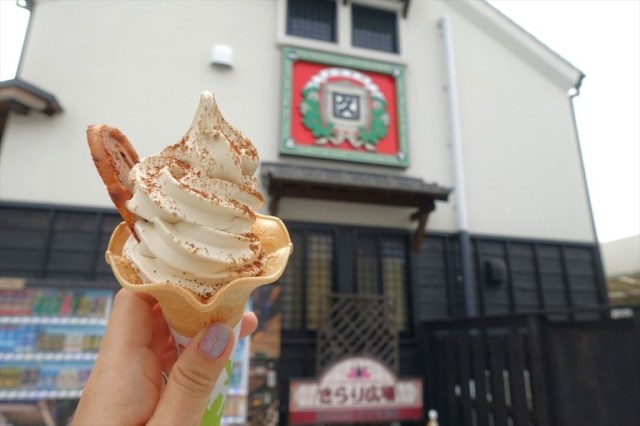
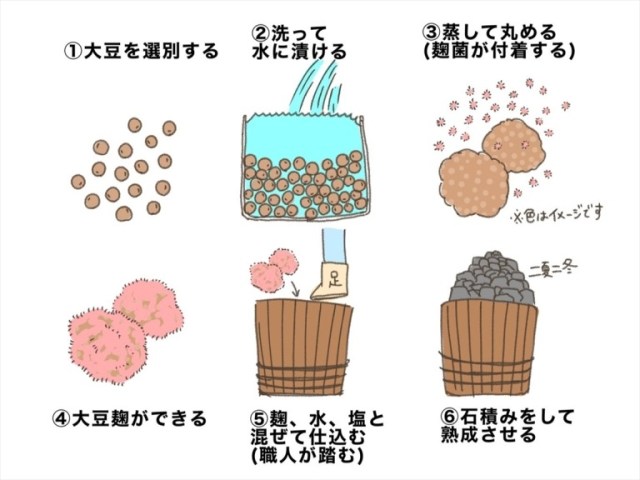
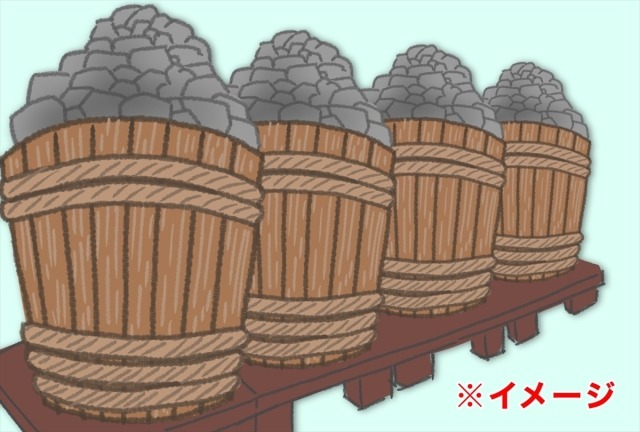
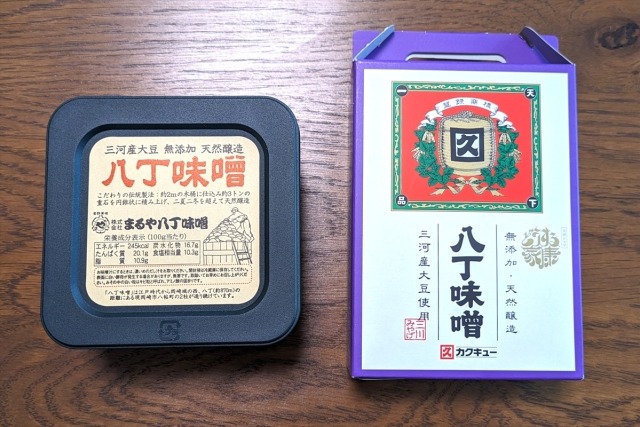

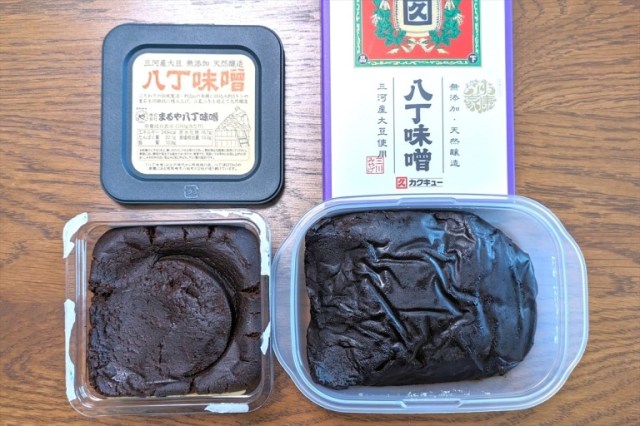
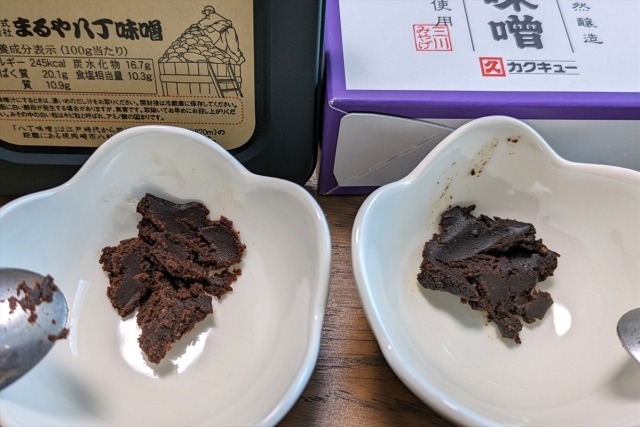
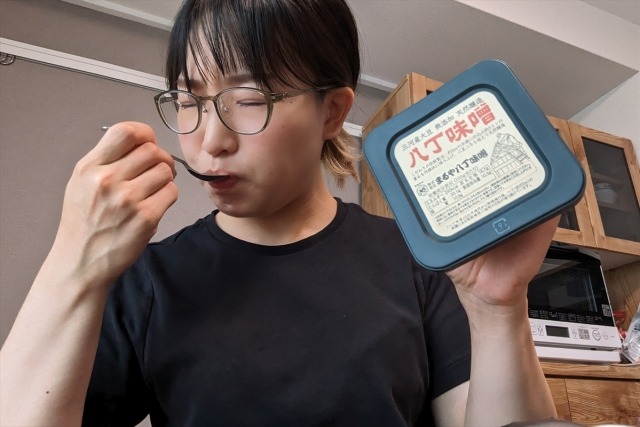
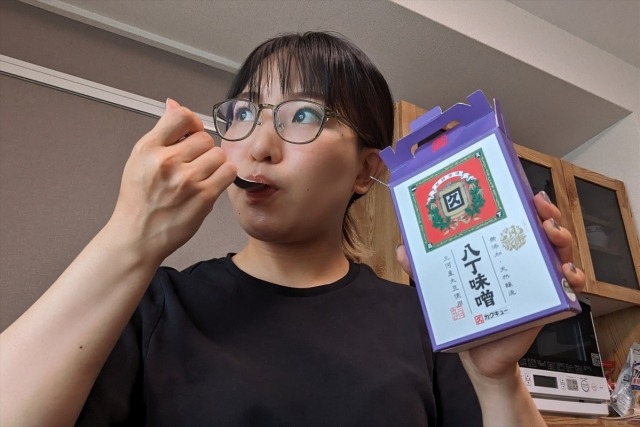
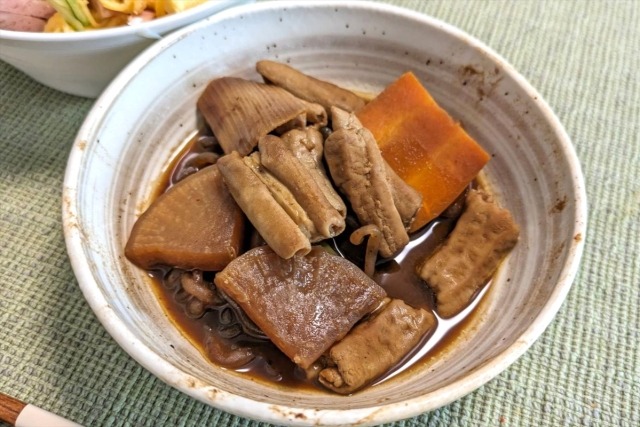
 Miso soup could help protect against cancer, research suggests
Miso soup could help protect against cancer, research suggests New canned cocktail designed to perfectly pair with Japanese food, created with AI【Taste test】
New canned cocktail designed to perfectly pair with Japanese food, created with AI【Taste test】 Is fancy drinkable yogurt better than regular yogurt for marinating chicken? 【Taste Test】
Is fancy drinkable yogurt better than regular yogurt for marinating chicken? 【Taste Test】 Do you know what this caterpillar-like food is? We had no idea!【Taste test】
Do you know what this caterpillar-like food is? We had no idea!【Taste test】 Can we replace tofu with cheese in miso soup? We find out【SoraKitchen】
Can we replace tofu with cheese in miso soup? We find out【SoraKitchen】 Foreigner’s request for help in Tokyo makes us sad for the state of society
Foreigner’s request for help in Tokyo makes us sad for the state of society Japanese city loses residents’ personal data, which was on paper being transported on a windy day
Japanese city loses residents’ personal data, which was on paper being transported on a windy day Seaside scenery, history, and so many desserts on Yokohama’s Akai Kutsu【Japan Loop Buses】
Seaside scenery, history, and so many desserts on Yokohama’s Akai Kutsu【Japan Loop Buses】 Harajuku Station’s beautiful old wooden building is set to return, with a new complex around it
Harajuku Station’s beautiful old wooden building is set to return, with a new complex around it Should you add tartar sauce to Japanese curry rice? CoCo Ichi makes diners an unusual offer
Should you add tartar sauce to Japanese curry rice? CoCo Ichi makes diners an unusual offer Ghibli Park now selling “Grilled Frogs” from food cart in Valley of Witches
Ghibli Park now selling “Grilled Frogs” from food cart in Valley of Witches Osaka governor suggests lowering voting age to 0 to curb population decline
Osaka governor suggests lowering voting age to 0 to curb population decline Japanese company uses “crow language” to keep them away from garbage 【Video】
Japanese company uses “crow language” to keep them away from garbage 【Video】 McDonald’s new Happy Meals offer up cute and practical Sanrio lifestyle goods
McDonald’s new Happy Meals offer up cute and practical Sanrio lifestyle goods Japanese ramen restaurants under pressure from new yen banknotes
Japanese ramen restaurants under pressure from new yen banknotes French Fries Bread in Tokyo’s Shibuya becomes a hit on social media
French Fries Bread in Tokyo’s Shibuya becomes a hit on social media Studio Ghibli releases new action figures featuring Nausicaä of the Valley of the Wind characters
Studio Ghibli releases new action figures featuring Nausicaä of the Valley of the Wind characters Red light district sushi restaurant in Tokyo shows us just how wrong we were about it
Red light district sushi restaurant in Tokyo shows us just how wrong we were about it New private rooms on Tokaido Shinkansen change the way we travel from Tokyo to Kyoto
New private rooms on Tokaido Shinkansen change the way we travel from Tokyo to Kyoto Tokyo Tsukiji fish market site to be redeveloped with 50,000-seat stadium, hotel, shopping center
Tokyo Tsukiji fish market site to be redeveloped with 50,000-seat stadium, hotel, shopping center Beautiful Ghibli sealing wax kits let you create accessories and elegant letter decorations【Pics】
Beautiful Ghibli sealing wax kits let you create accessories and elegant letter decorations【Pics】 Studio Ghibli releases Kiki’s Delivery Service chocolate cake pouches in Japan
Studio Ghibli releases Kiki’s Delivery Service chocolate cake pouches in Japan New definition of “Japanese whiskey” goes into effect to prevent fakes from fooling overseas buyers
New definition of “Japanese whiskey” goes into effect to prevent fakes from fooling overseas buyers Our Japanese reporter visits Costco in the U.S., finds super American and very Japanese things
Our Japanese reporter visits Costco in the U.S., finds super American and very Japanese things All-you-can-drink Starbucks and amazing views part of Tokyo’s new 170 meter-high sky lounge
All-you-can-drink Starbucks and amazing views part of Tokyo’s new 170 meter-high sky lounge More foreign tourists than ever before in history visited Japan last month
More foreign tourists than ever before in history visited Japan last month New Pokémon cakes let you eat your way through Pikachu and all the Eevee evolutions
New Pokémon cakes let you eat your way through Pikachu and all the Eevee evolutions Disney princesses get official manga makeovers for Manga Princess Cafe opening in Tokyo
Disney princesses get official manga makeovers for Manga Princess Cafe opening in Tokyo Sales of Japan’s most convenient train ticket/shopping payment cards suspended indefinitely
Sales of Japan’s most convenient train ticket/shopping payment cards suspended indefinitely Sold-out Studio Ghibli desktop humidifiers are back so Totoro can help you through the dry season
Sold-out Studio Ghibli desktop humidifiers are back so Totoro can help you through the dry season Japanese government to make first change to romanization spelling rules since the 1950s
Japanese government to make first change to romanization spelling rules since the 1950s Ghibli founders Toshio Suzuki and Hayao Miyazaki contribute to Japanese whisky Totoro label design
Ghibli founders Toshio Suzuki and Hayao Miyazaki contribute to Japanese whisky Totoro label design Doraemon found buried at sea as scene from 1993 anime becomes real life【Photos】
Doraemon found buried at sea as scene from 1993 anime becomes real life【Photos】 Tokyo’s most famous Starbucks is closed
Tokyo’s most famous Starbucks is closed One Piece characters’ nationalities revealed, but fans have mixed opinions
One Piece characters’ nationalities revealed, but fans have mixed opinions We asked a Uniqlo employee what four things we should buy and their suggestions didn’t disappoint
We asked a Uniqlo employee what four things we should buy and their suggestions didn’t disappoint Princesses, fruits, and blacksmiths: Study reveals the 30 most unusual family names in Japan
Princesses, fruits, and blacksmiths: Study reveals the 30 most unusual family names in Japan What does vegan ramen taste like? We try Veggie Brown Rice Ramen
What does vegan ramen taste like? We try Veggie Brown Rice Ramen The secret ingredient to miso soup? Rock music!
The secret ingredient to miso soup? Rock music! Daiso vs. Seria: Which sells the better egg white whipper? We find out【SoraKitchen】
Daiso vs. Seria: Which sells the better egg white whipper? We find out【SoraKitchen】 Kanpai! Japanese sweet sake found to have beauty benefits
Kanpai! Japanese sweet sake found to have beauty benefits Chocolate to Put on Rice – The crazy condiment from Japan for when white rice is just too plain
Chocolate to Put on Rice – The crazy condiment from Japan for when white rice is just too plain Testing out the Happy Pawcake Maker to see just how much joy it brings us【SoraKitchen】
Testing out the Happy Pawcake Maker to see just how much joy it brings us【SoraKitchen】 Mr. Sato eats a Japanese sweet potato brulée so good that it just about knocks his socks off
Mr. Sato eats a Japanese sweet potato brulée so good that it just about knocks his socks off We find an Okinawan chili sauce made with the rarest kind of awamori–so we had to taste it
We find an Okinawan chili sauce made with the rarest kind of awamori–so we had to taste it Cup Noodle vs 7-Eleven! We test their new scorching instant ramen cups to see who beats at heat
Cup Noodle vs 7-Eleven! We test their new scorching instant ramen cups to see who beats at heat This London ramen restaurant’s super-strange ramen shocks our Japanese taste-tester
This London ramen restaurant’s super-strange ramen shocks our Japanese taste-tester We tried making natto the old-fashioned way, and the result was unexpected but delicious 【SoraKitchen】
We tried making natto the old-fashioned way, and the result was unexpected but delicious 【SoraKitchen】 Miso soup capsule toys look good enough to eat, come with recipes to make the real thing!【Photos】
Miso soup capsule toys look good enough to eat, come with recipes to make the real thing!【Photos】 Japan’s 10 best singing voices as chosen by people in the industry
Japan’s 10 best singing voices as chosen by people in the industry Around Japan in 47 rice balls: Mr. Sato buys each prefecture’s musubi all from one Tokyo shop
Around Japan in 47 rice balls: Mr. Sato buys each prefecture’s musubi all from one Tokyo shop Making a traditional Japanese dessert from “heaven grass”【Photos】
Making a traditional Japanese dessert from “heaven grass”【Photos】
Leave a Reply